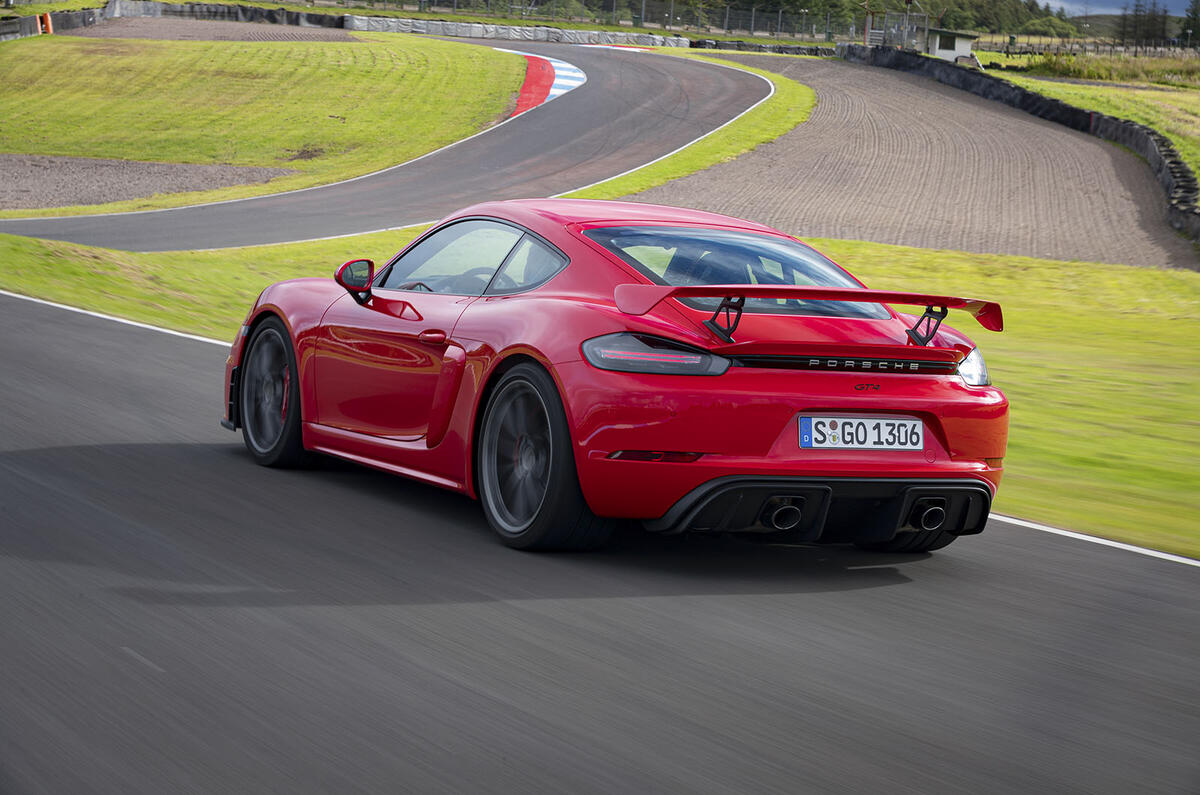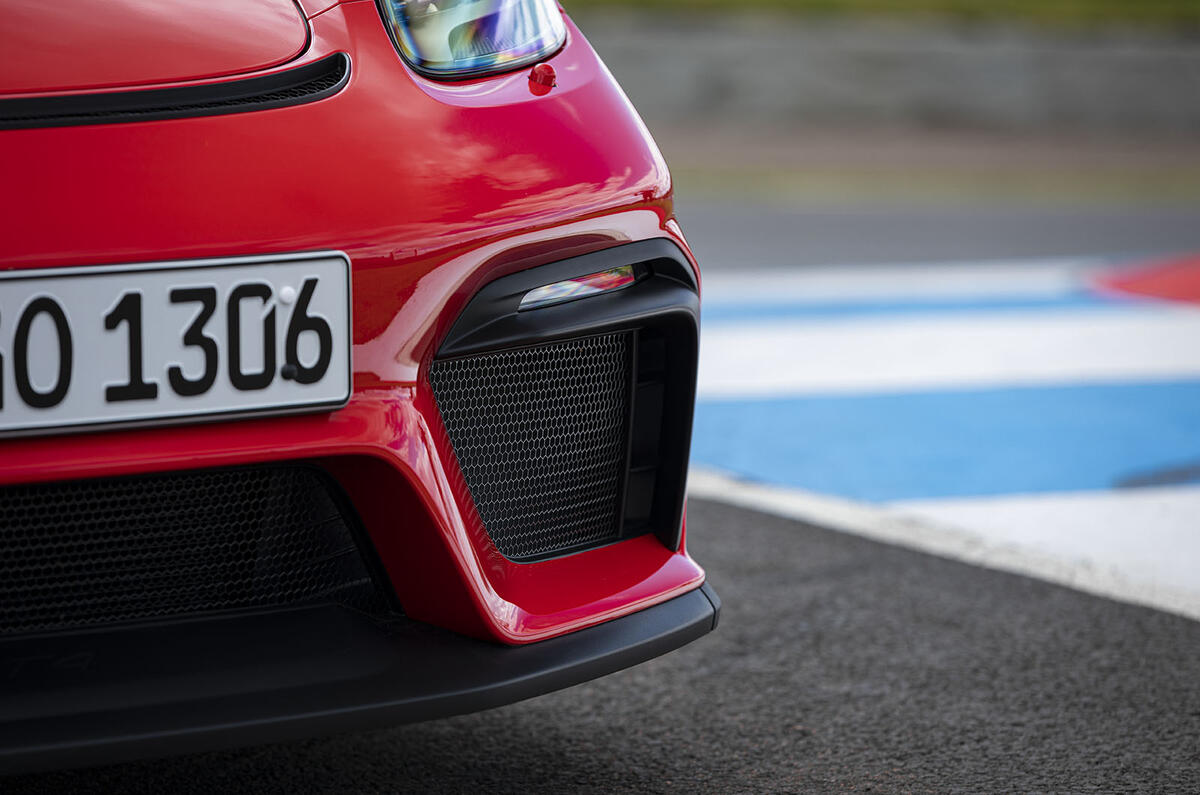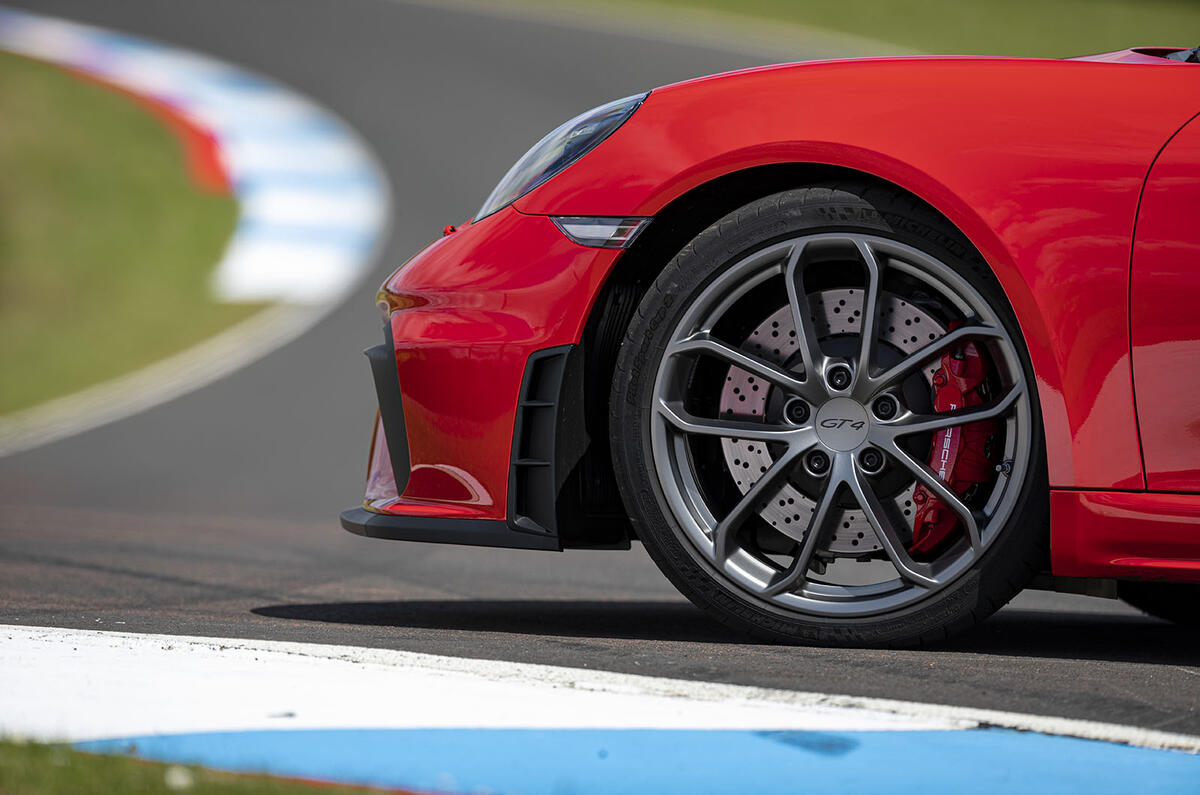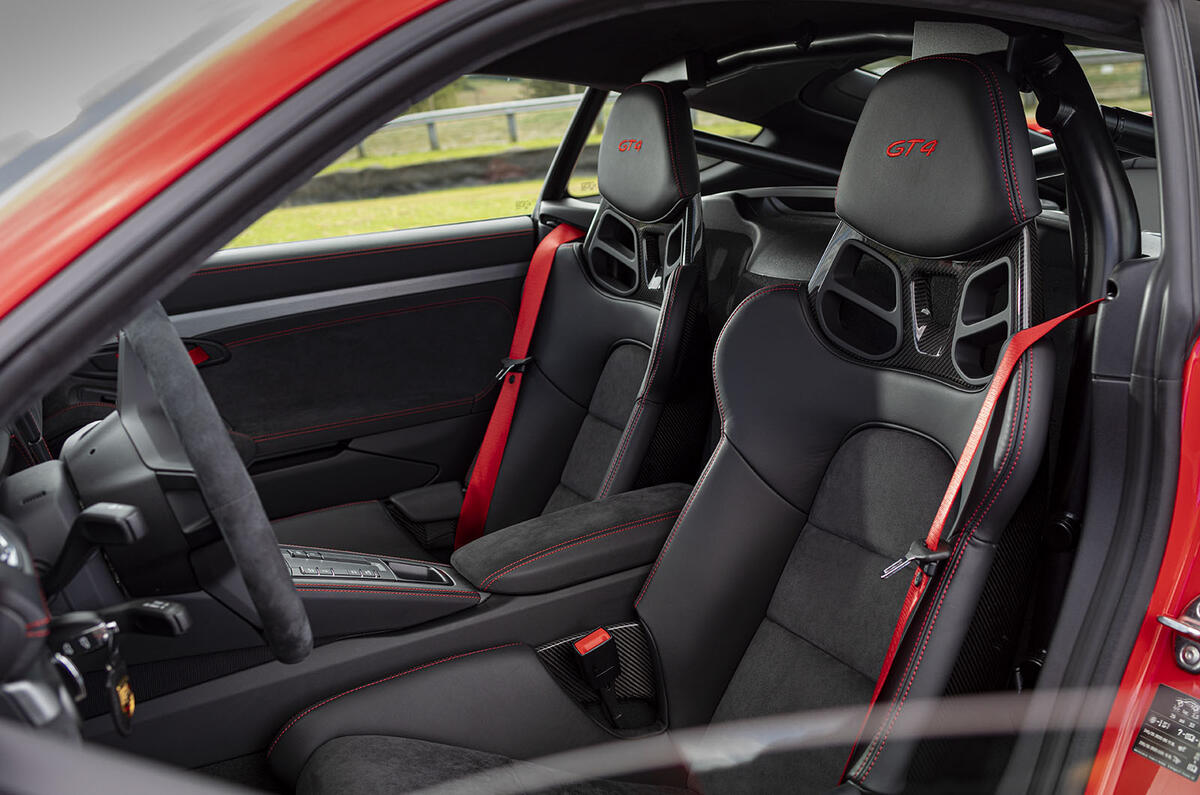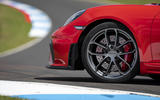You’re looking at the second-generation Porsche 718 Cayman GT4, and therefore your new departure point into the big-winged world of Porsche’s quickest and sweetest creations.
You’ll remember the old Cayman GT4. It was the first time the brains behind the 911-based GT3 and GT2 track day specials were allowed a proper go at a mid-engined model, and they built near-as-dammit the perfect driver’s car. Naturally, the basic recipe has hardly changed. The front axle is still taken wholesale from the GT3, although the 20in wheels are unique to the GT4. At the rear, the architecture is again largely carried over from the common Cayman, but the dampers are inverted in true motorsport style and the control arms and subframe are pure GT3.
It goes on: the engine remains paired to a short-throw six-speed manual gearbox, with drive delivered to the rear wheels through a mechanical limited-slip differential. You still get semi-slick tyres in the form of Michelin’s Pilot Sport Cup 2 and a huge rear wing, although the new item makes a fifth more downforce than before and works in tandem with a pretty beastly diffuser carried over from the GT4 Clubsport race car. In fact, aero is a significant element of the new Cayman GT4, which can somehow lap the Nürburgring quicker than the Carrera GT 'super sports car' did back in 2004. ‘Progress’ hardly does it justice.



